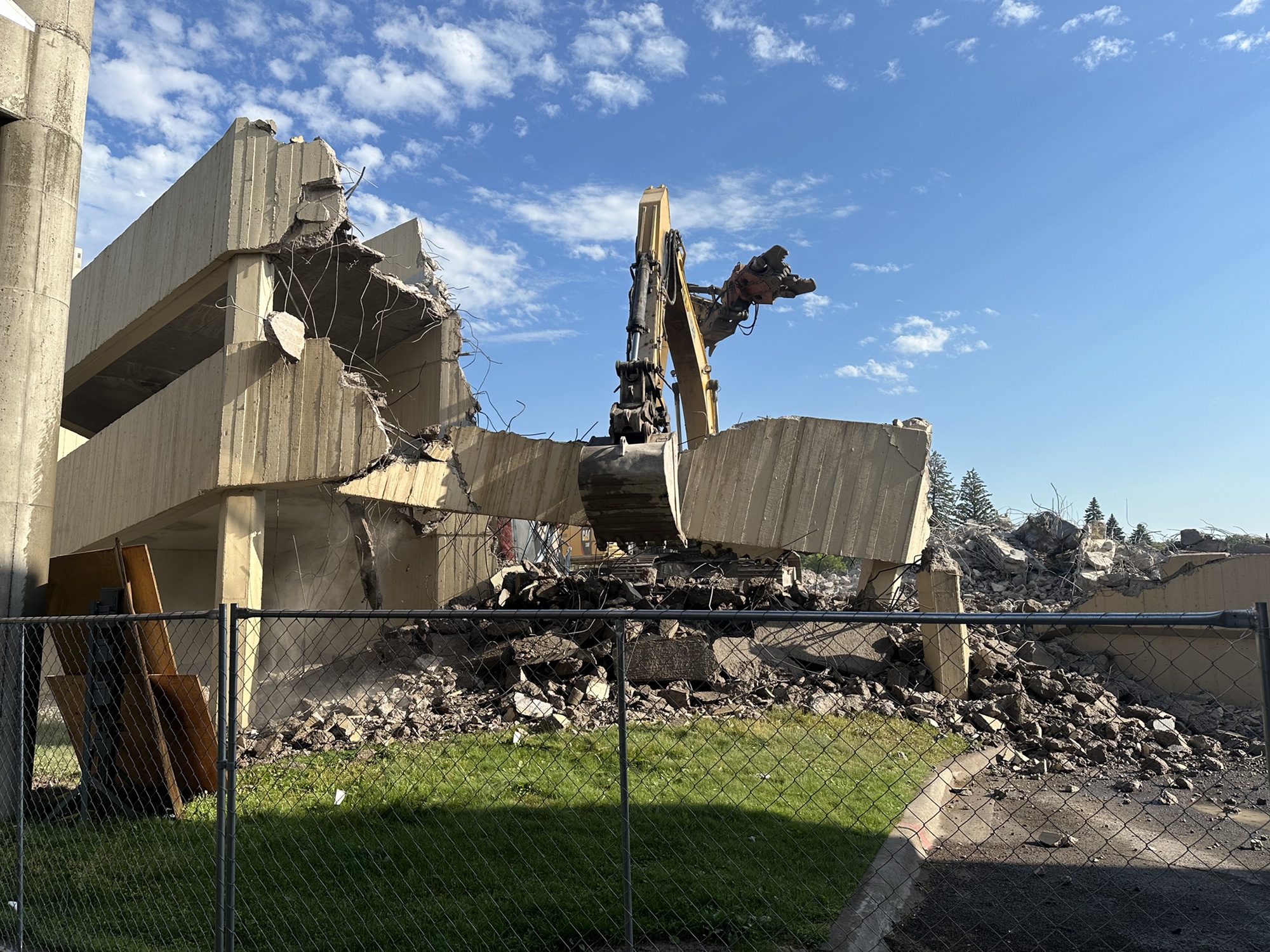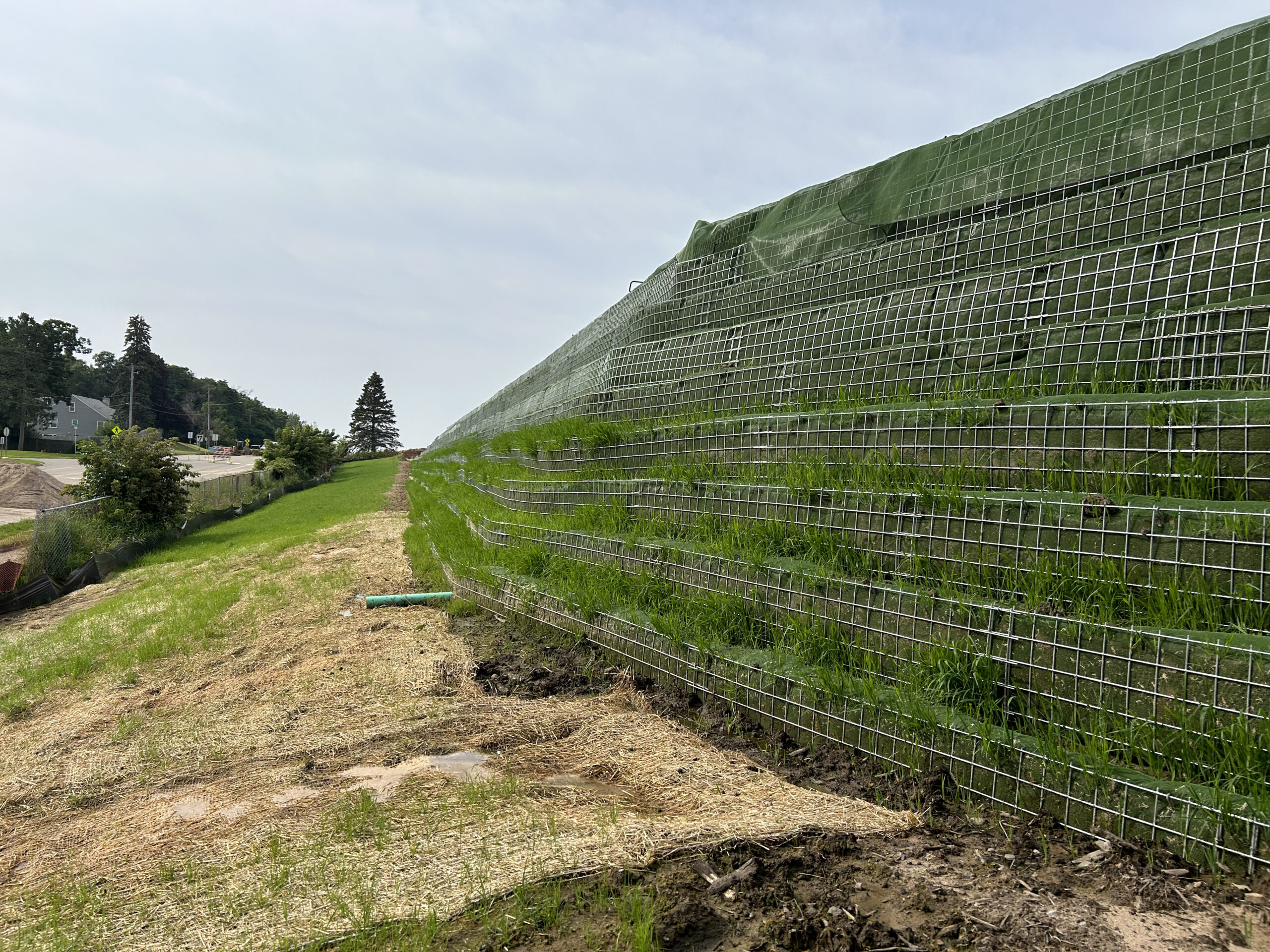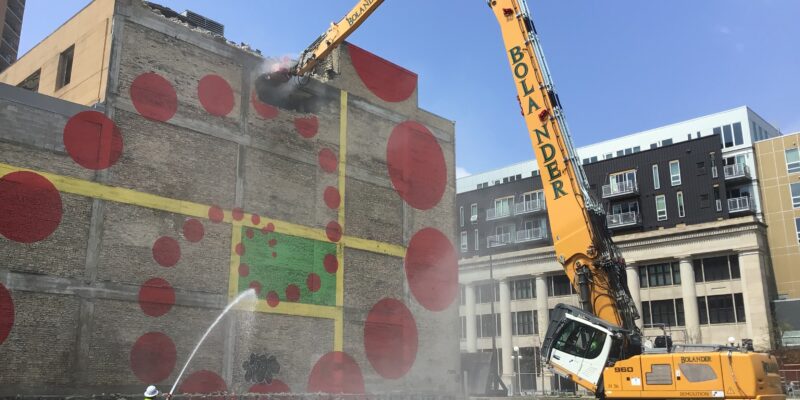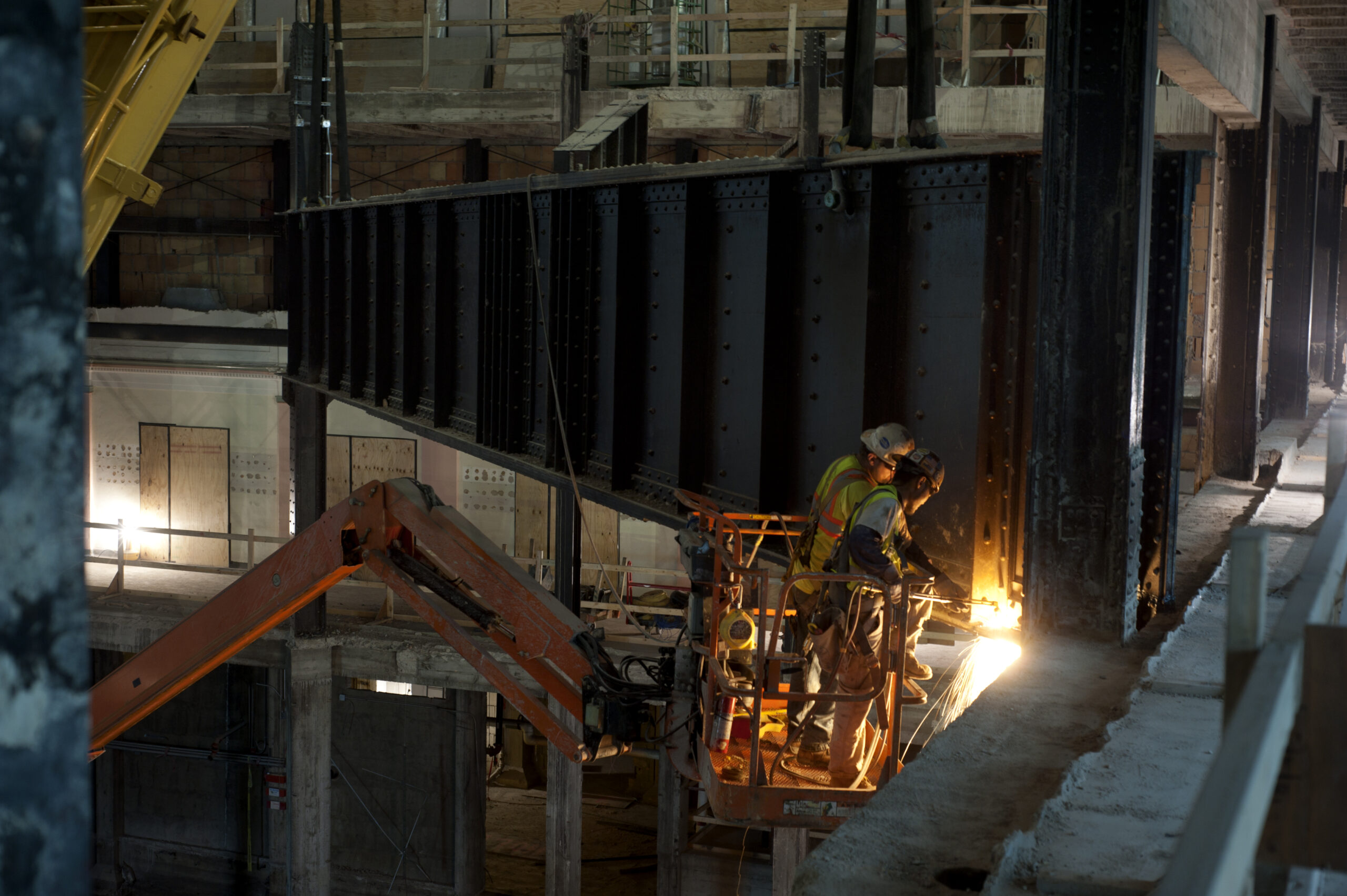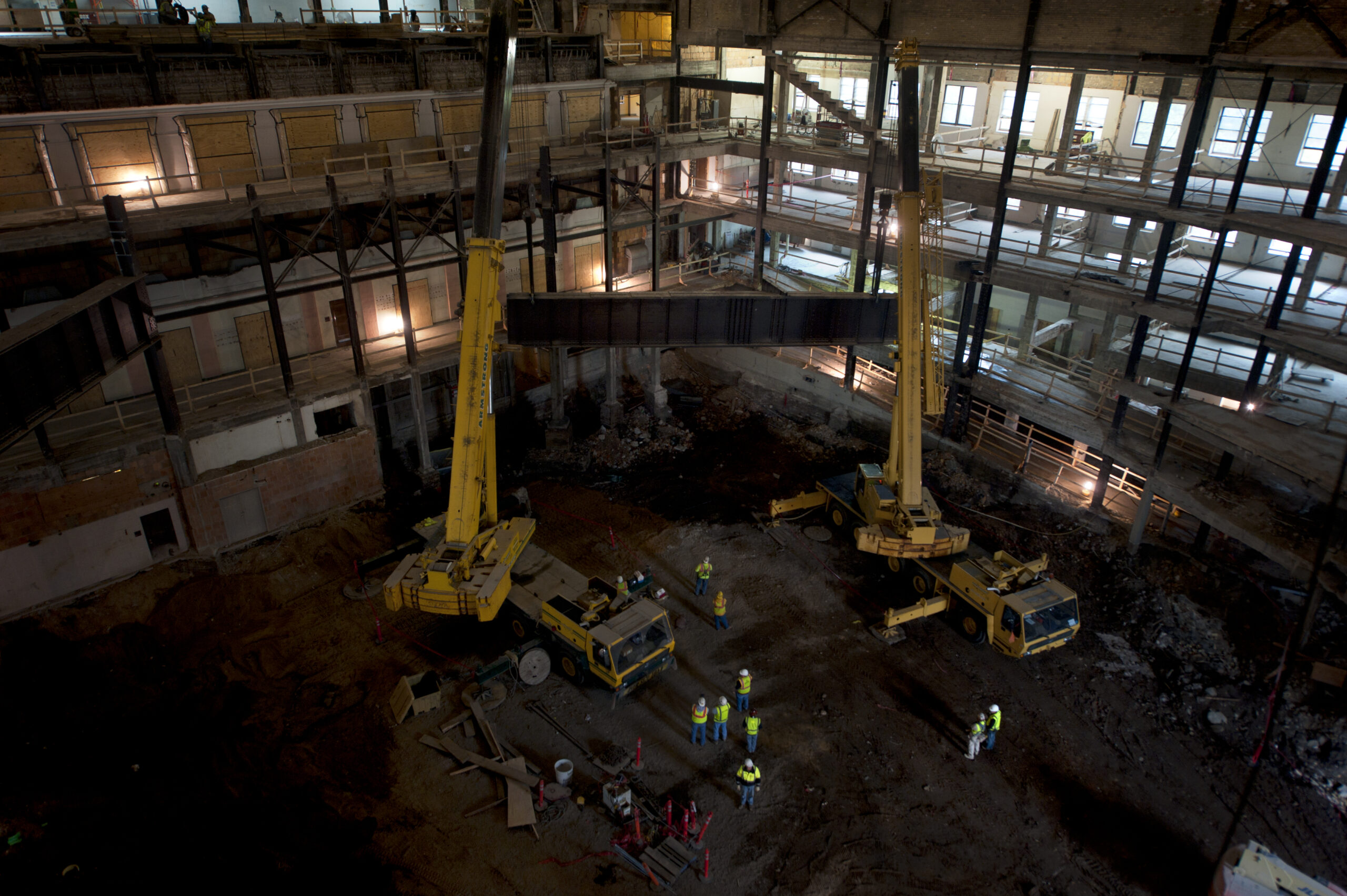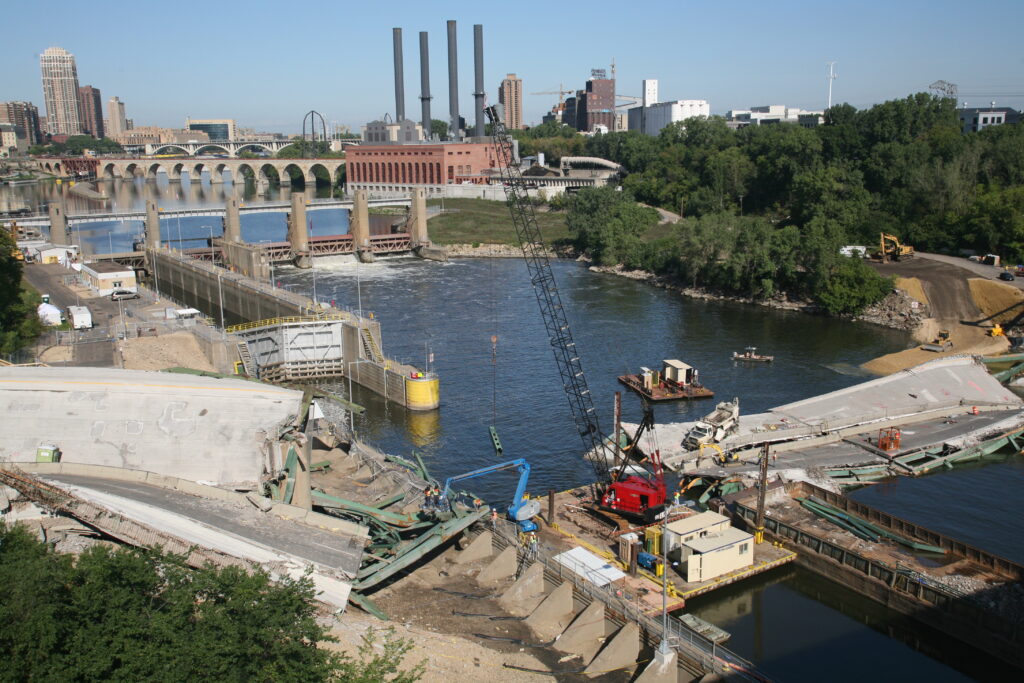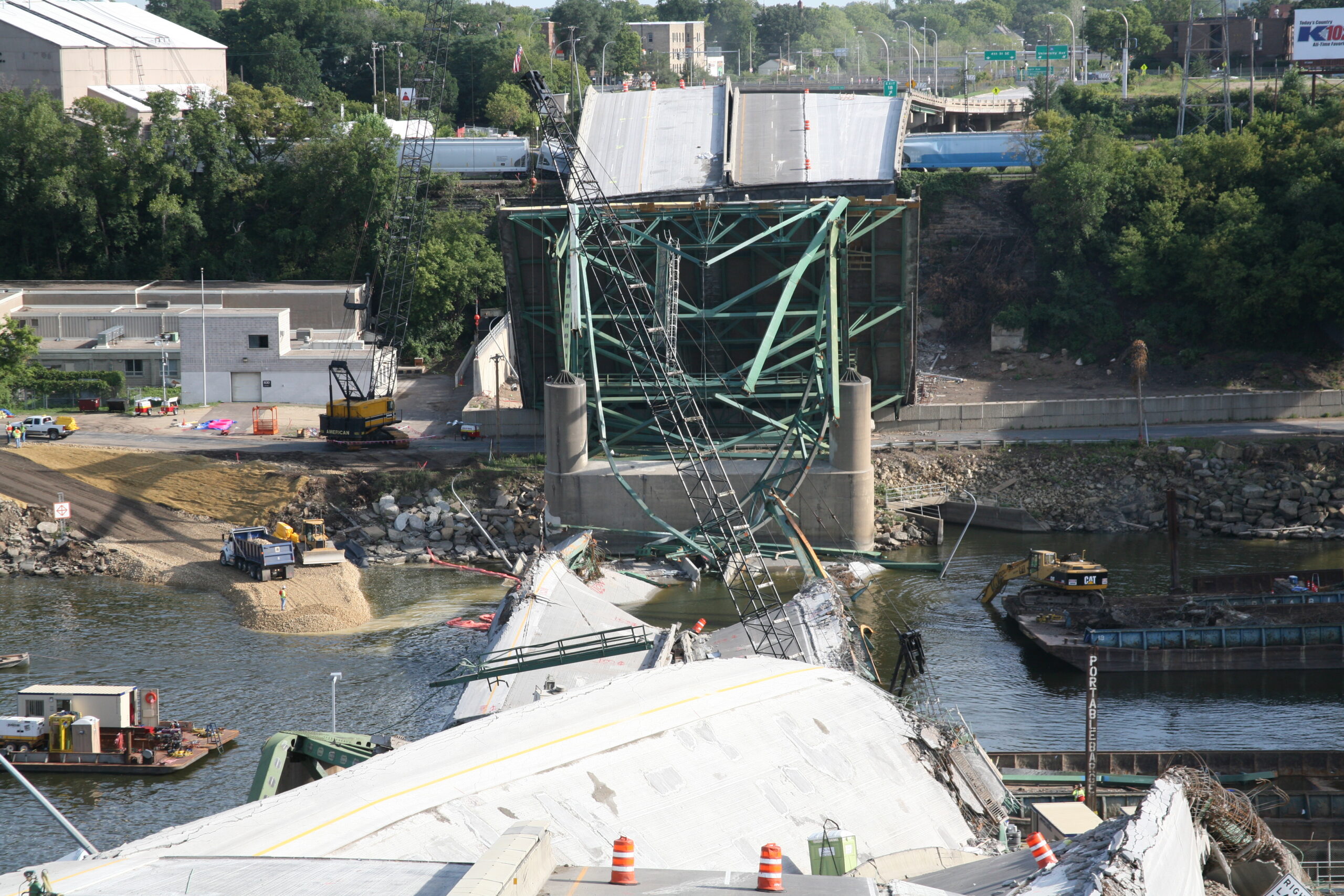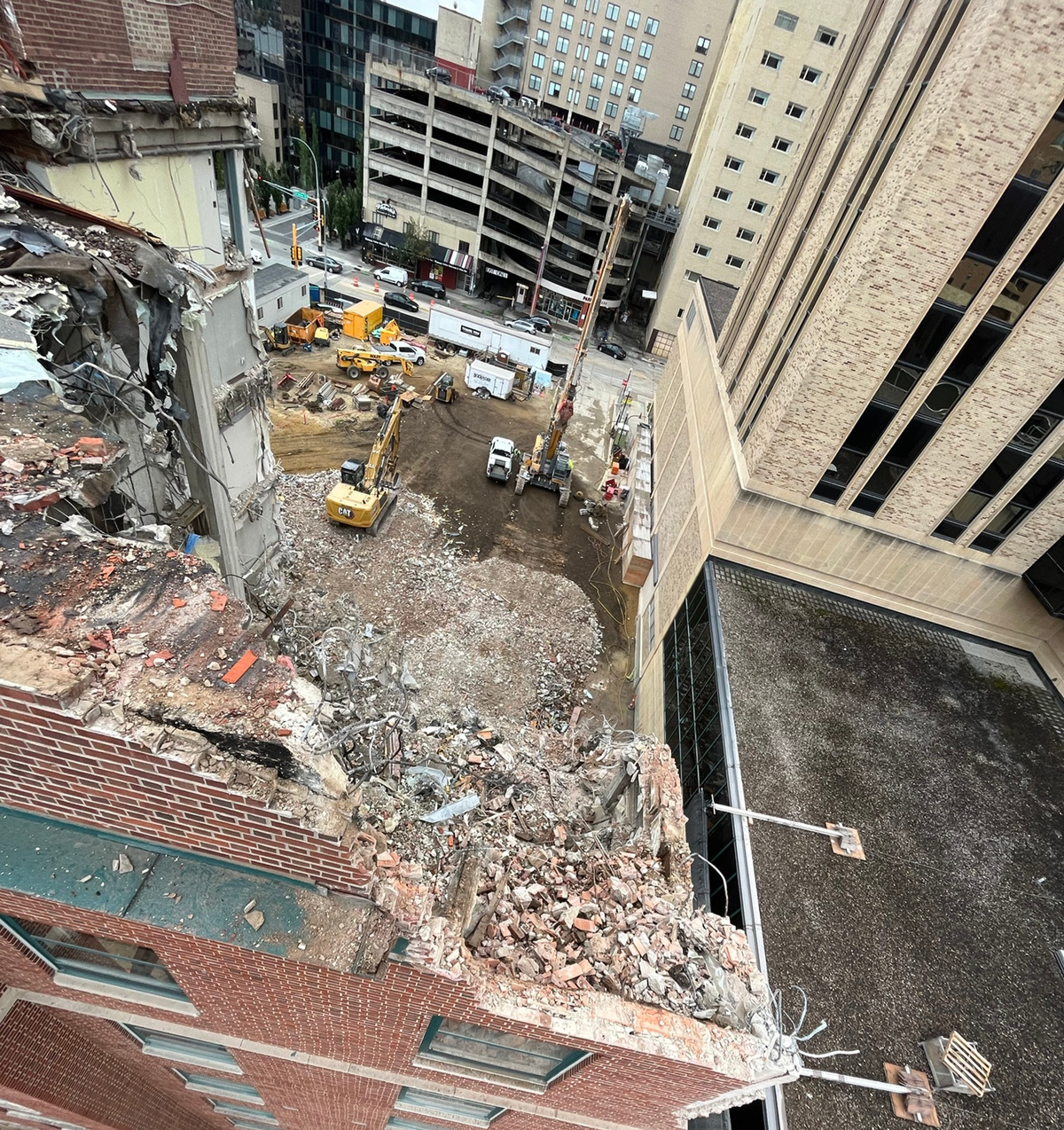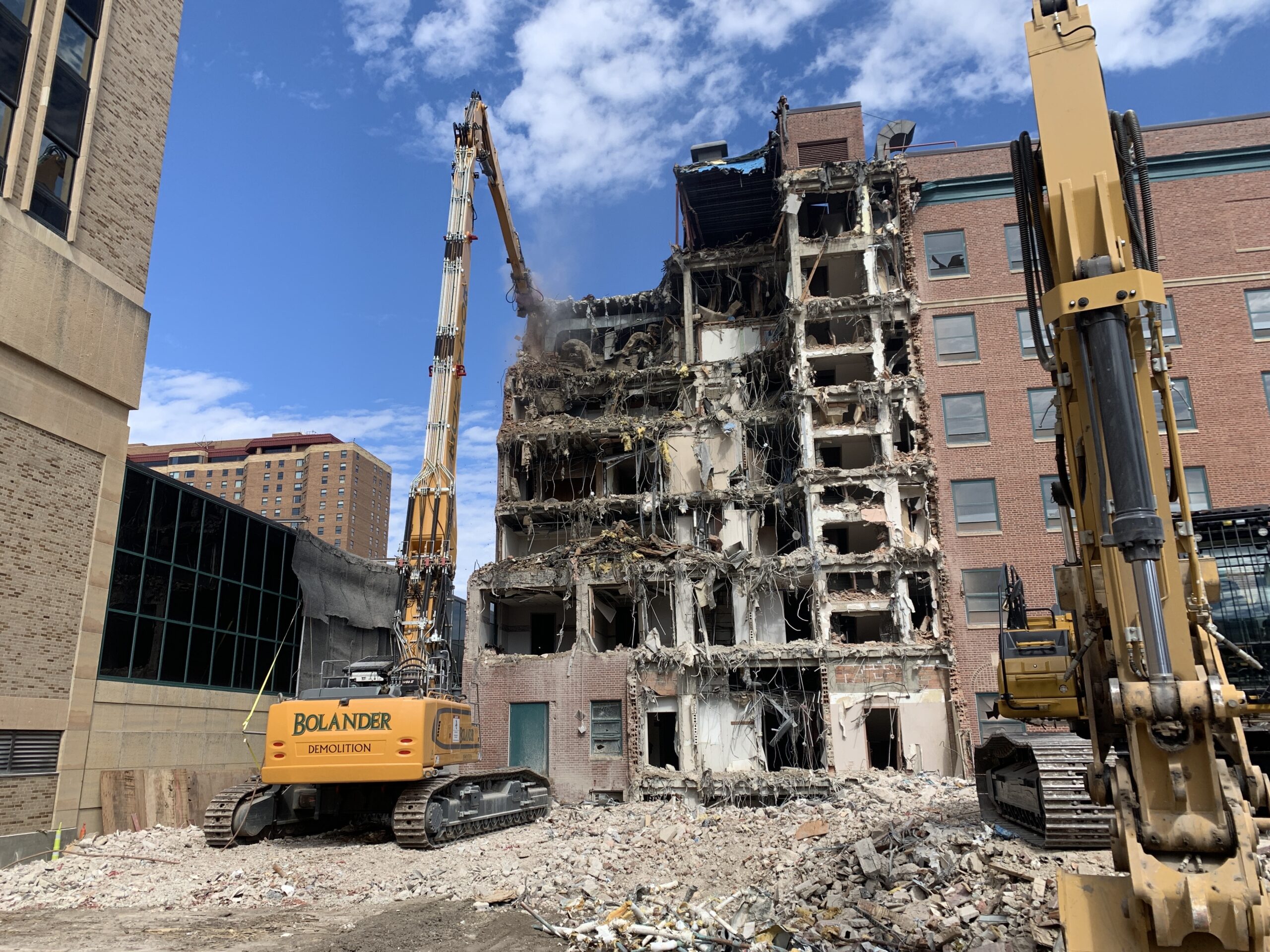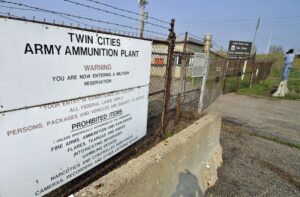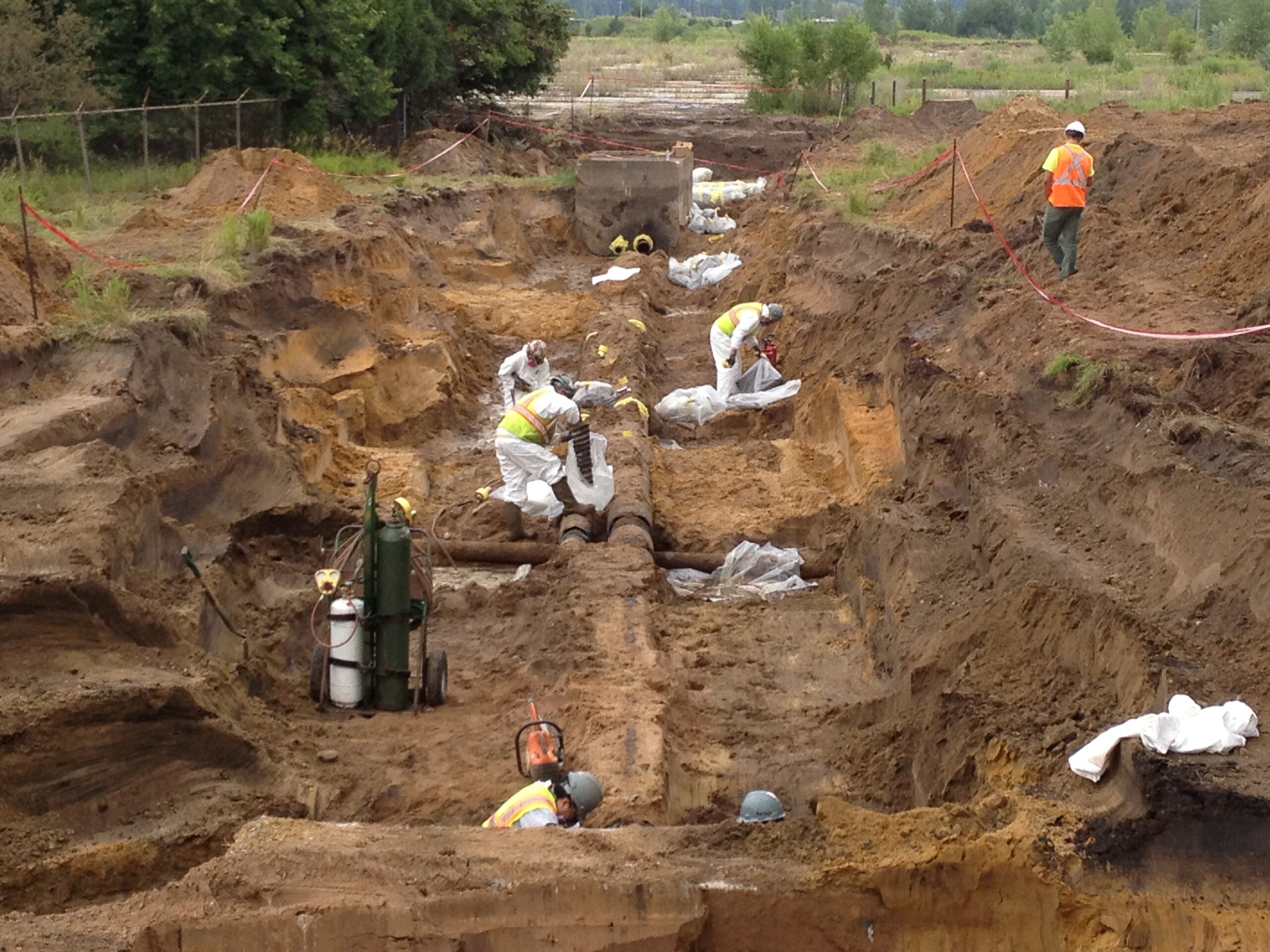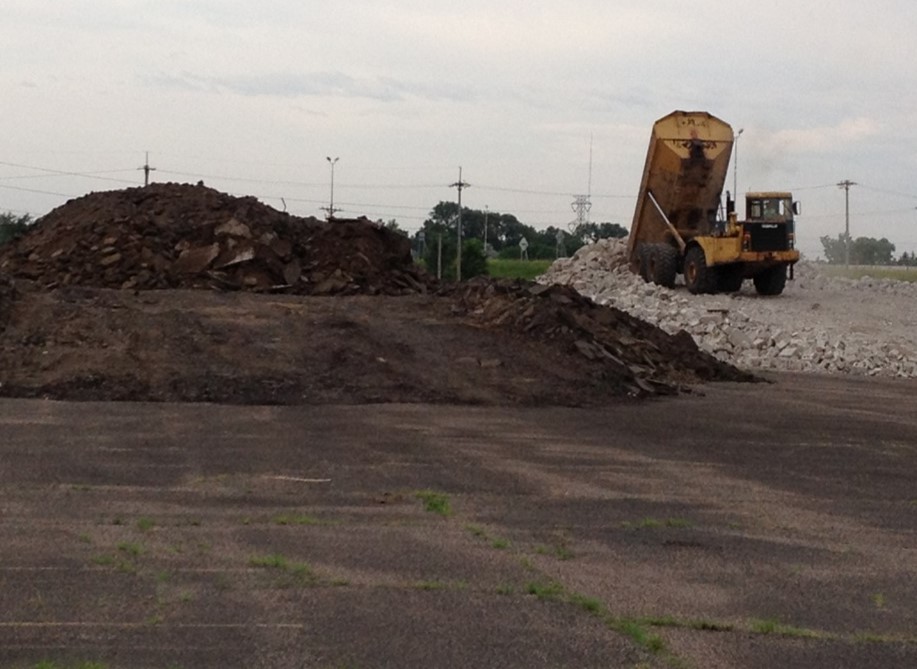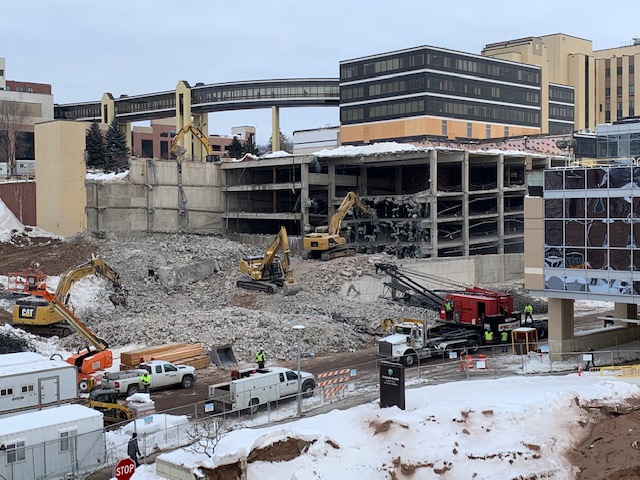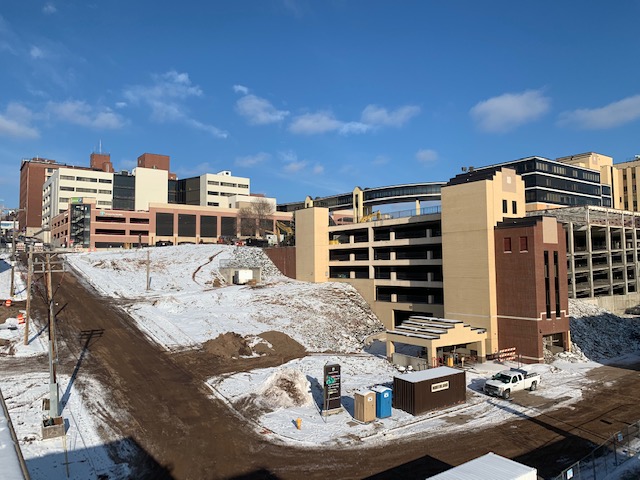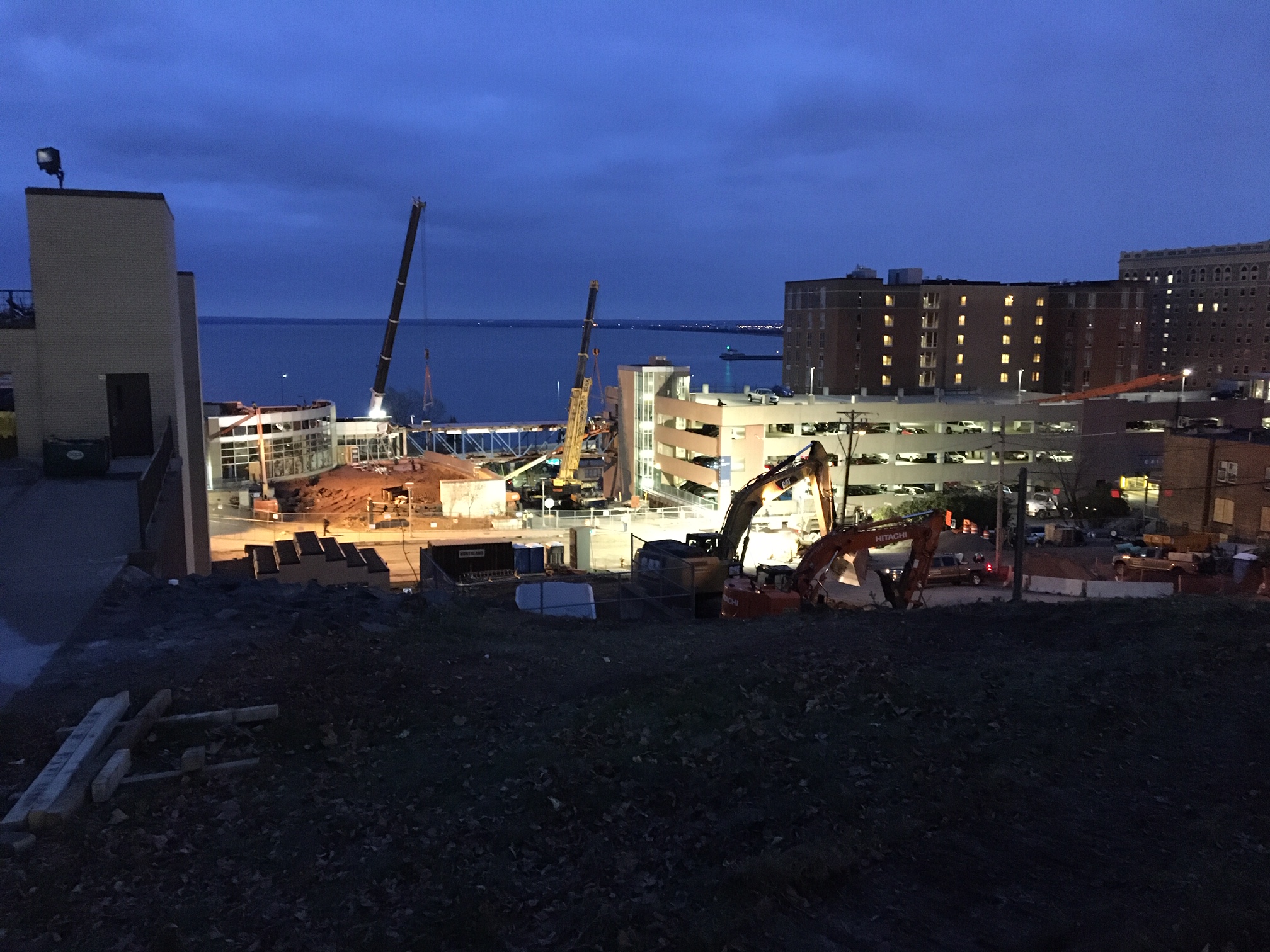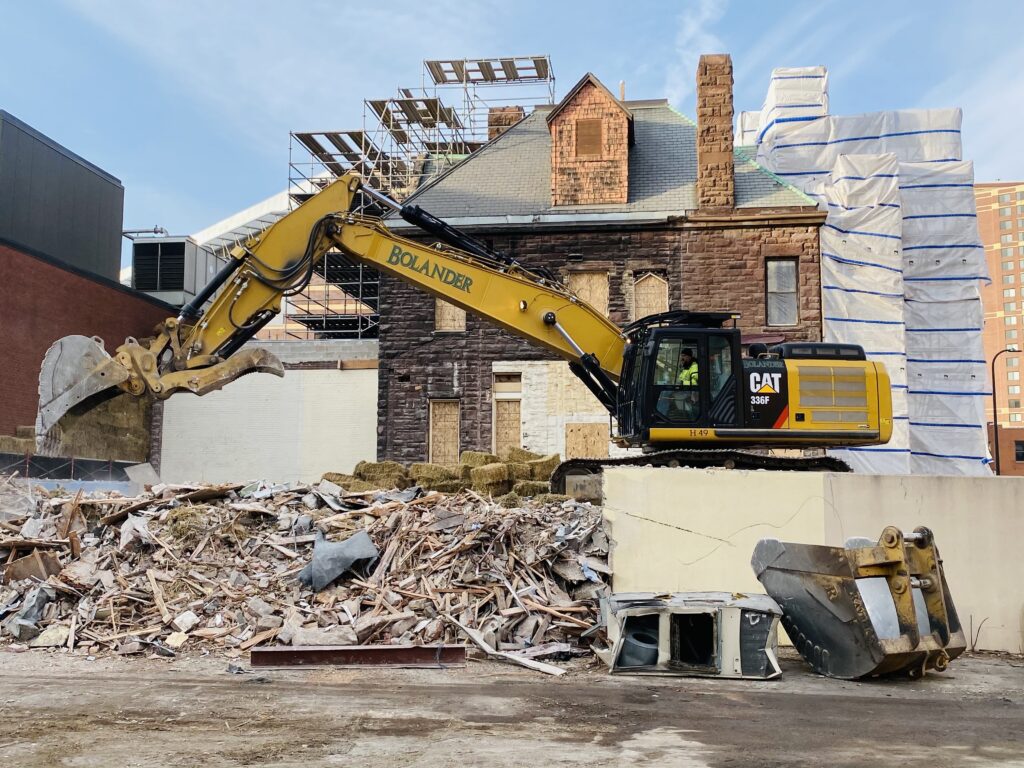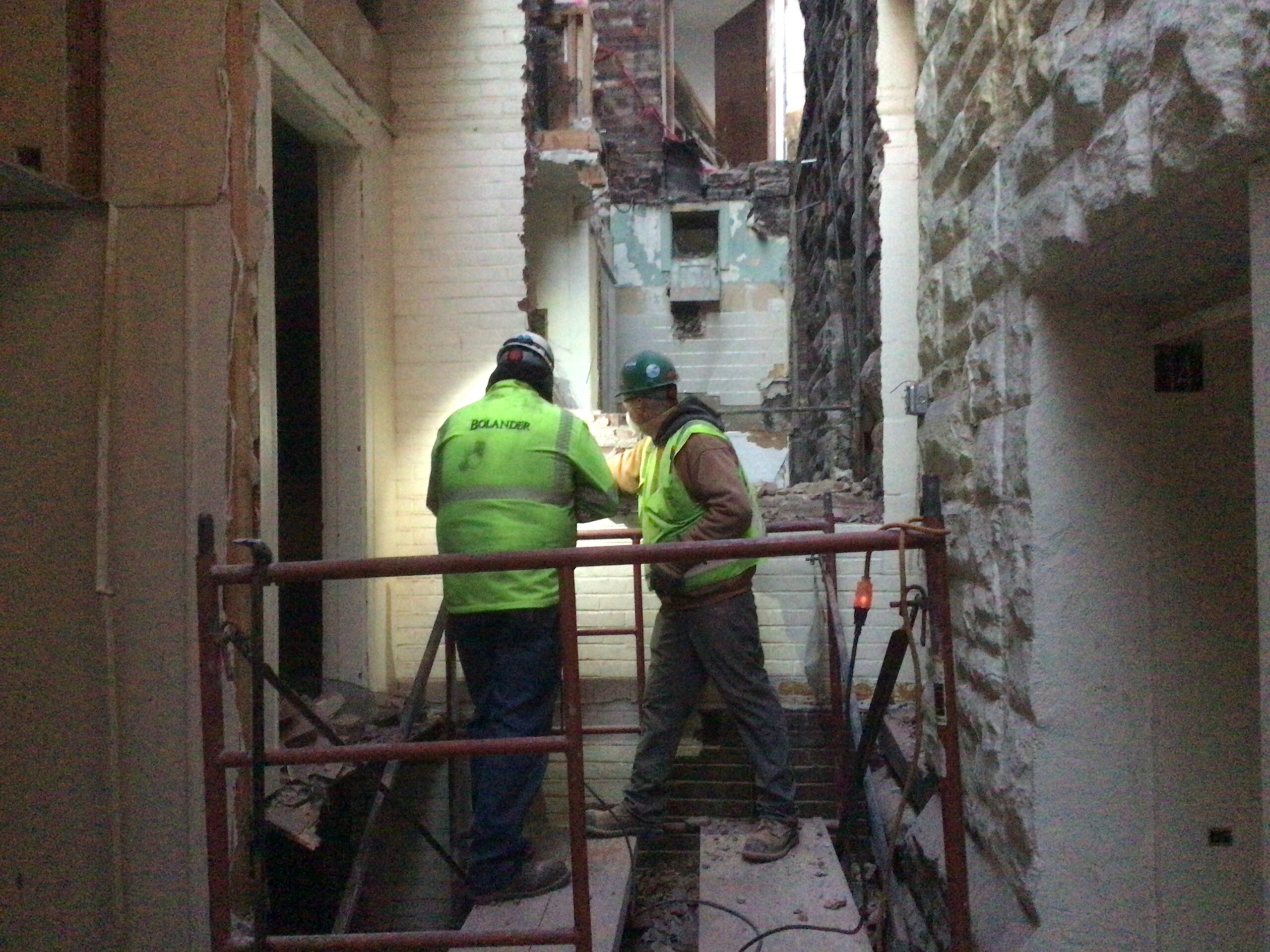
Project Details
Client: Erdman
Location: Duluth, MN
Services: Select Demolition, Drilled Piers
Overview
Bolander began work in 2023 for the St. Luke’s Hospital in Duluth, MN. Our scope of work started with the Demolition package, but Bolander’s Demo crew provided such a level of service that Erdman felt compelled to add the drilled pier scope of work to our contract as well. The project consisted of demolishing the existing parking ramp to build a larger parking ramp in it’s place. The demolition work needed to be methodical and well thought out as to not disturb the adjacent hospital building. And the Drilled pier work had to react to, and manage, the varying conditions and rock elevations throughout the site. Bolander’s Scope of work was completed in late 2023. The project was a great success for our company and it received many compliments from people that work in the Duluth area




